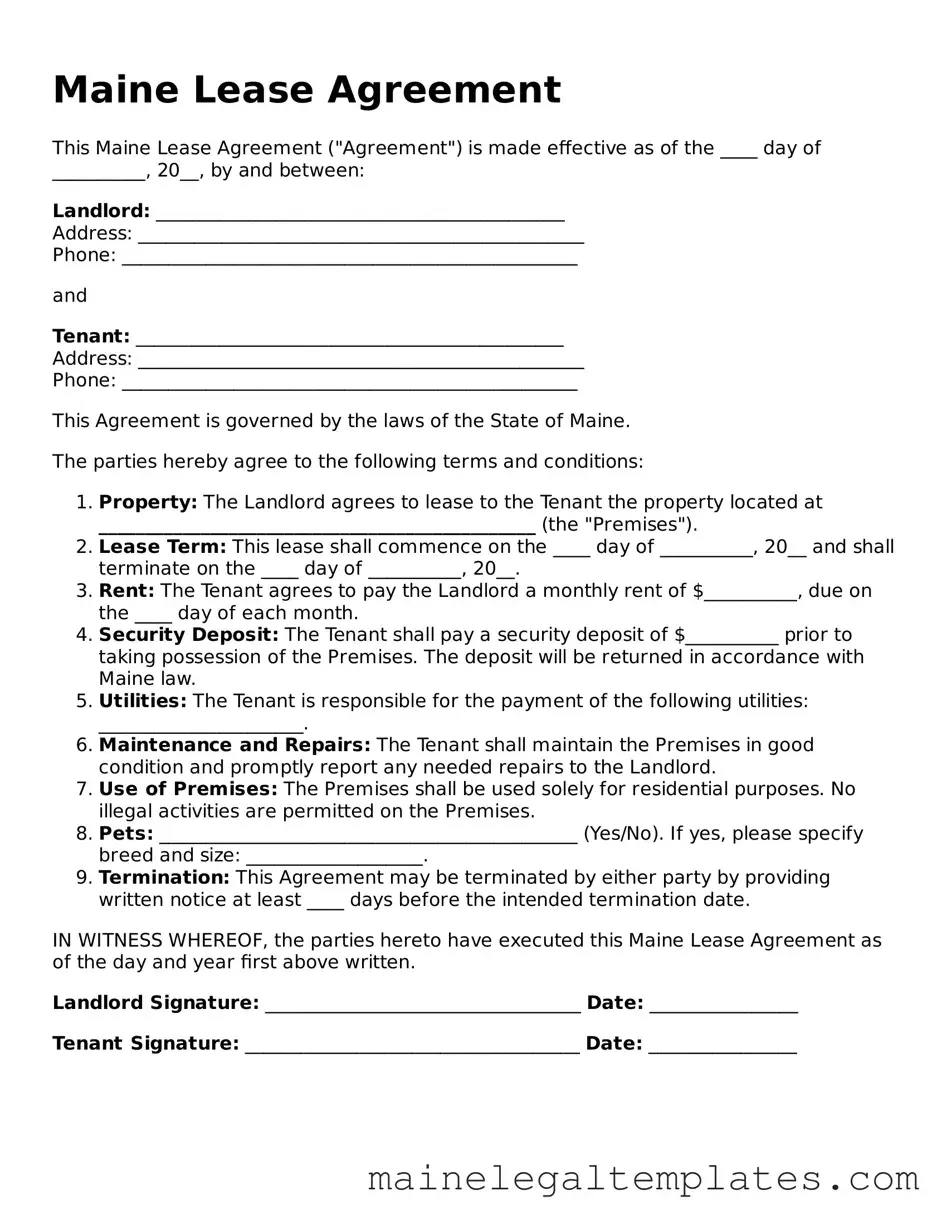Maine Lease Agreement
This Maine Lease Agreement ("Agreement") is made effective as of the ____ day of __________, 20__, by and between:
Landlord: ____________________________________________
Address: ________________________________________________
Phone: _________________________________________________
and
Tenant: ______________________________________________
Address: ________________________________________________
Phone: _________________________________________________
This Agreement is governed by the laws of the State of Maine.
The parties hereby agree to the following terms and conditions:
- Property: The Landlord agrees to lease to the Tenant the property located at _______________________________________________ (the "Premises").
- Lease Term: This lease shall commence on the ____ day of __________, 20__ and shall terminate on the ____ day of __________, 20__.
- Rent: The Tenant agrees to pay the Landlord a monthly rent of $__________, due on the ____ day of each month.
- Security Deposit: The Tenant shall pay a security deposit of $__________ prior to taking possession of the Premises. The deposit will be returned in accordance with Maine law.
- Utilities: The Tenant is responsible for the payment of the following utilities: ______________________.
- Maintenance and Repairs: The Tenant shall maintain the Premises in good condition and promptly report any needed repairs to the Landlord.
- Use of Premises: The Premises shall be used solely for residential purposes. No illegal activities are permitted on the Premises.
- Pets: _____________________________________________ (Yes/No). If yes, please specify breed and size: ___________________.
- Termination: This Agreement may be terminated by either party by providing written notice at least ____ days before the intended termination date.
IN WITNESS WHEREOF, the parties hereto have executed this Maine Lease Agreement as of the day and year first above written.
Landlord Signature: __________________________________ Date: ________________
Tenant Signature: ____________________________________ Date: ________________
